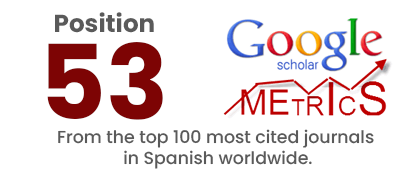“Swiss world” in modern drama
DOI:
https://doi.org/10.36097/rsan.v1i25.776Keywords:
Swiss literature, drama, national identity, mentality, globalization, national realitiesAbstract
The aim of the article is to reveal the peculiarities of “Swiss world” – its specific realities, peculiarities of mentality, national character, traditions in the new Swiss drama, i.e., Swiss dramaturgy of the late 20th - early 21st centuries (based on the work by Lucas Barfuss, Miriam Neidhart, Handl Klaus, Leo Tuor, etc.). In the modern globalized world, the borders of the national are gradually blurring, the originality and uniqueness of traditions are lost. Swiss dramatists describe this process with special keenness of observation and subtlety, because the conflict between hermeticism and openness was inherent in Switzerland throughout the history of the country. But today Switzerland as a historically “hermetic” and “neutral” country has been retaining its special status in the European world. The plays analyzed in this article speak, on the one hand, of strengthening the all-European tendencies, the similar nature of the problems facing the whole of Western society and the contradiction between reality and the national myth that represents the country as a paradise on earth, evidence, on the other hand, in favor of “the Swiss world. The article considers both tendencies – centrifugal and centripetal that characterize the current situation in Switzerland.
Downloads
References
Zinnatullina, Z. R., Vafina, A. H. (2014). Influence of William Thackeray on the character system of Julian Fellowers' Snobs. Life Science Journal, Volume 11, Issue 4, pp. 472-475.
Zinnatullina, Z. R., Khabibullina, L. F. (2015). Mythologization of History in English literature by the end of the Twentieth Century (John Fowles, A. Burgess) (Article). Journal of Language and Literature, Volume 6, Issue 2, pp. 76-78.
Khabibullina, L. F., Zinnatullina, Z. R. (2016). The Role of Historical and Religious Components in John Fowles's Novel A Maggot. Pertanika Journal of Social Science and Humanities, Volume 24, Issue 2, pp. 767-776.
Khabibullina, A. Z., Nagumanova, E. F., Amurskaya, O. Y. (2016). Russian Classical Literature in Multi-ethnic Environment: The Issues of Reception and Methodology of Teaching. Ifte 2016 - 2nd International Forum on Teacher Education, Volume 12, pp. 75-82.
Heimberg, Ch. (2008). Les allers et retours de la mémoire en Suisse. Revue française de pédagogie, No. 165, pp. 55-63
Barkhoff, J., Heffernan, V. (2010). Schweiz schreiben: Zu Konstruktion und Dekonstruktion des Mythos Schweiz in der Gegenwartsliteratur. Berlin; New-York: WalterdeGruyter, p. 321.
Schläpfer, B. (2001). La Scène en Suisse. Le théâtre et son public durant cinq siècles. – Zurich: Pro Helvetia, p. 149.
Anthology of Modern Swiss Drama. (2013). V.1.– М.:NLO, p. 496.
Anthology of Modern Swiss Drama. (2017). V.2 / Preface by Е. Kovalskaya. – М.:NLO, p. 464.
STEP 2. New German Drama. - М.: German Cultural Center named after Goethe, (2005), p. 480.
STEP 3. New German Drama. - М.: German Cultural Center named after Goethe, (2008), p. 447.
STEP 4. New German Drama.- М.: German Cultural Center named after Goethe; OSI, (2011), p. 484.
STEP 11+. New German Drama.- М.: Goethe-Institute, (2015), p. 448.
Wacker J. (2016). Assistance au suicide, euthanasies : situation Suisse. Études sur la mort, No. 2 (150), pp. 79-92.


















